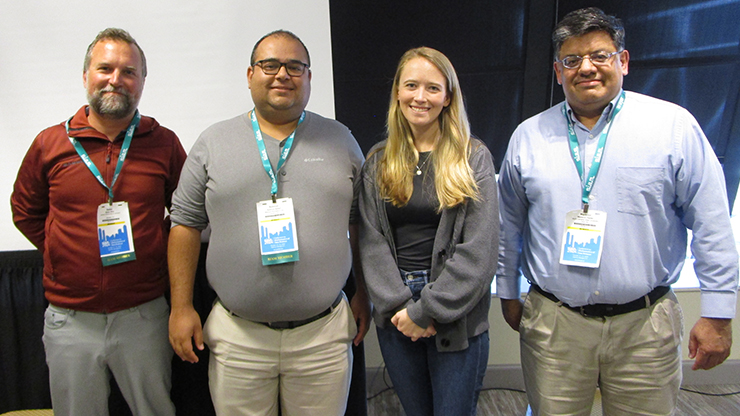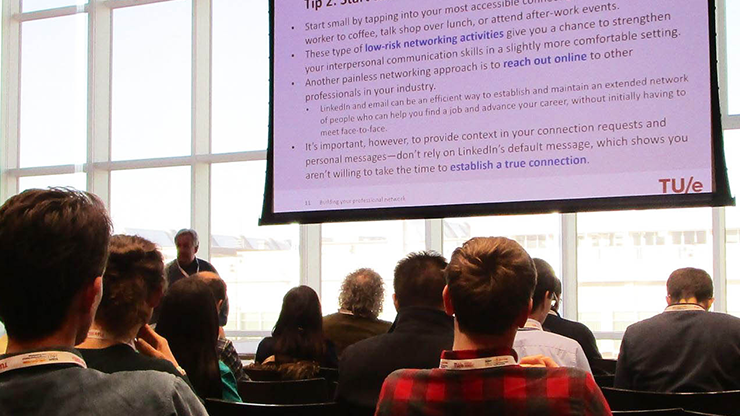Establishing an Effective Online Presence as an Early-career Researcher
In today’s increasingly digital world, scientists in all areas of employment—academia, industry, and the national laboratories—should maintain an updated online presence. Doing so is especially important for students and early-career researchers who are actively seeking employment and other prospects for professional advancement: networking opportunities, award nominations, invitations to present at conferences, and the like. Members of search committees—hiring or otherwise—nearly always turn to Google to learn more about candidates of interest. A polished online profile can make a valuable first impression.
During a minisymposium presentation at the Third Joint SIAM/CAIMS Annual Meetings, which are currently taking place in Montréal, Québec, Canada, David Gleich of Purdue University shared effectual strategies for curating a strong professional online presence. He began by introducing six key components for any professional web profile:
- It should be easy to tell that it’s you.
- It should have a list of your papers, projects, and research, as well as copies or links of where the papers can be found.
- It should have links to your other online efforts and presences.
- You should describe yourself in your own words.
- You should have a way of getting in touch.
- It should have a recent CV.

A personal website should be accessible and easy to find. It should include a photo, title, and succinct summary statement that outlines relevant public professional information, points out distinguishing factors, and establishes one’s identity — avoiding potential confusion with any similarly-named individuals on LinkedIn, for example. “You should have some statement that describes who you are and what you do,” Gleich said. “We’re giving you a chance to define yourself in the way you want to be seen.” Ph.D. students who will soon enter the job market might also wish to mention the names of their advisors, collaborators, and mentors to help contextualize their work.
Ideally, this information will be accessible on several platforms. Academics often maintain their primary content on their university pages, which typically state current position and previous employment. However, Gleich noted that it might be useful to also link to a non-university site that contains a more robust portfolio. “One thing that you might want to consider is having a website area that you own in some sense, either GitHub or your own domain,” he said, adding that the latter is especially valuable for those with coding experience. Individuals in industry can similarly use their employment-sanctioned sites as jumping-off points that direct readers to more personal webpages.
Gleich reaffirmed that all professional websites must have a list of papers, projects, and relevant links. Sites like Google Scholar can maintain these lists automatically, so researchers who choose to manually curate their own records must update them regularly. “If there’s something that you’re proud of, you should show it to the world,” Gleich said. “When I investigate someone, I want to know what they do and what they have done. The titles of papers and projects and where they are published help me understand that.” He also encouraged early-career researchers to put their papers on arXiv for the sake of easy access. “This really does help make your papers more discoverable,” Gleich continued.
Additionally, a professional website should link to a person’s other online pages, such as LinkedIn, Google Scholar, GitHub, ORCID, X or Bluesky, and so forth. This type of cross-referencing can help corroborate one’s identity across multiple platforms. When asked about the benefit or detriment of pointing to nonprofessional social media platforms like Facebook or Instagram, Gleich didn’t have a strong opinion either way. “I don’t think it matters that much,” he said. “We know that people have lives outside of their professional lives. That said, if your activities might somehow seem a little bit controversial, consider this when you’re putting those links out there.”
All professional websites should include a visible email address so that visitors can readily get in touch. Depending on their level of activity on different platforms, some people even welcome direct messages through X, Bluesky, and so forth. Although office phones are gradually becoming a thing of the past, Gleich discouraged attendees from listing their cell phone numbers on their profiles.
A link to a complete, updated CV is naturally necessary. Nearly all committees that are considering any type of position or nomination want to review candidates’ CVs. “It’s awkward to have to email people and ask for their CV,” Gleich said. “You’ll experience no downsides to having your CV on your website.” However, individuals should also pull a few key points from these lengthy documents and make them easily visible on the site itself.
Gleich concluded his presentation by acknowledging that self-promotion and the creation of a robust online presence may feel a bit unnatural at first, but it gets easier with time. For junior scientists who are struggling with initial presentation, ChatGPT can be a useful tool for generating preliminary summary information based on a CV. “Don’t look at it as self-promotion, look at is as claiming your professional identity,” Gleich said. “Do something you love, share it, and keep at it. It’ll grow slowly but surely.”
About the Author
Lina Sorg
Managing editor, SIAM News
Lina Sorg is the managing editor of SIAM News.

Stay Up-to-Date with Email Alerts
Sign up for our monthly newsletter and emails about other topics of your choosing.






